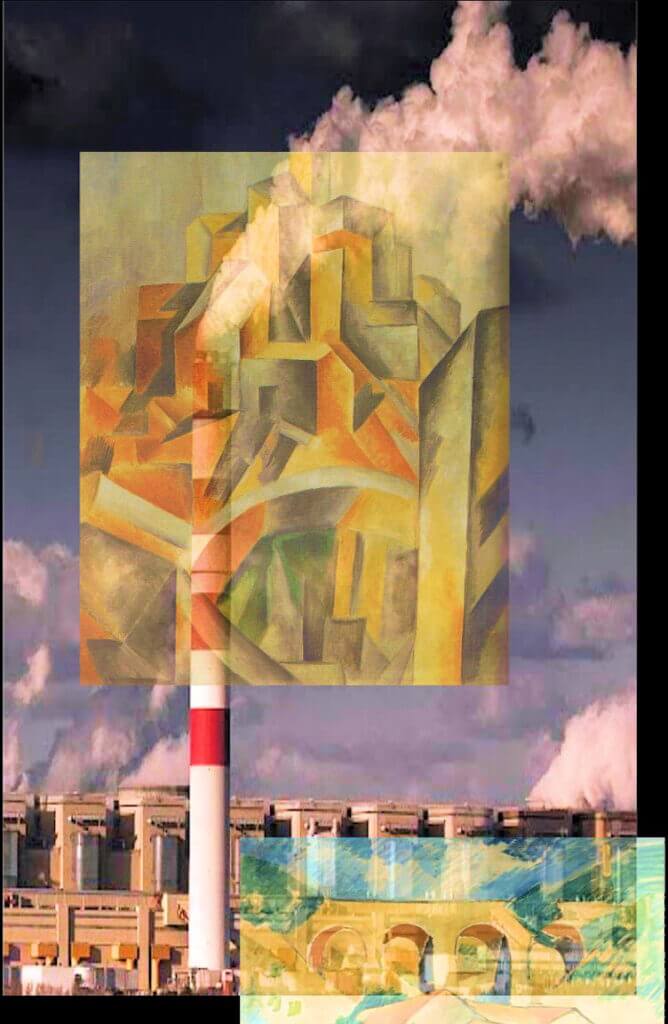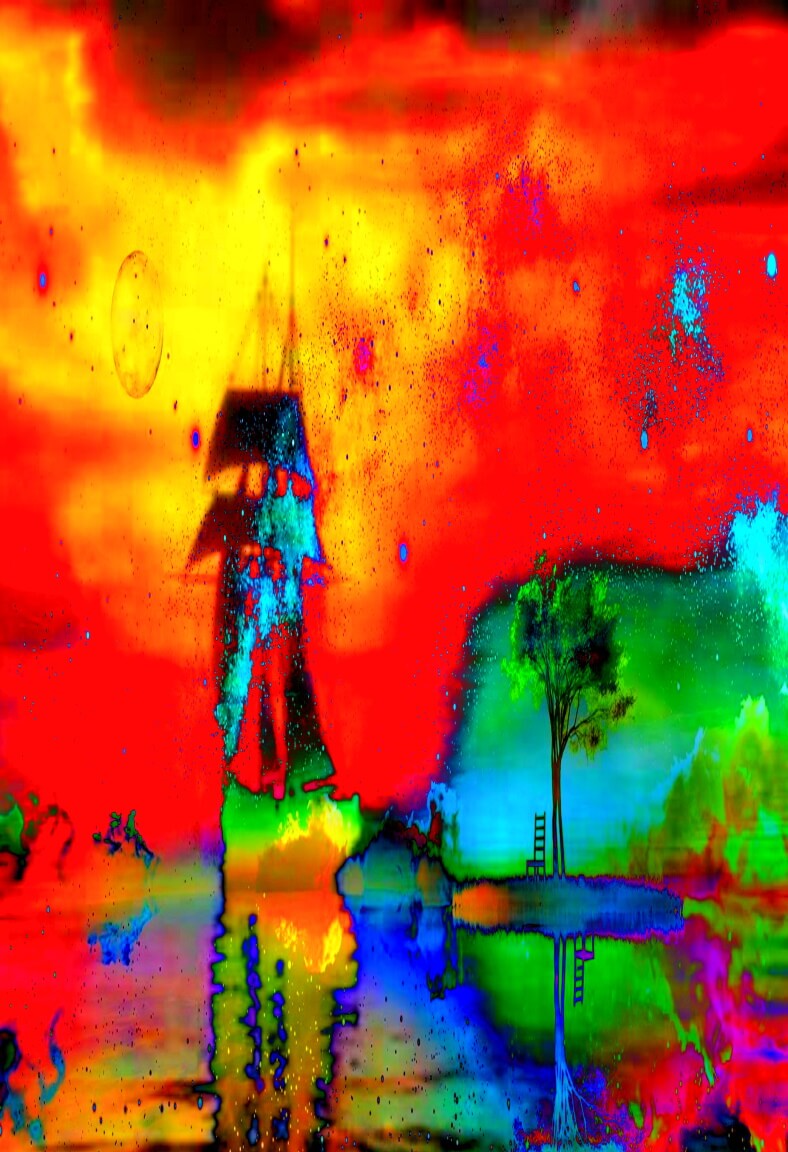
Technologies Impacts
On the far left is the entrance to the Codex Studies. It was a series of works illustrating how the schools in modernism were created and then driven by automation and techno-economic development. Art schools from the 1880s to the 1960s were reviewed for impacts. The series takes major artworks and highlights technology developments impact on the artists. A techno-economic example is in where modernism began – Impressionism. Steam is the literal embodiment for Impressionism theory and style.
In the center – The development of music technology in brief: moving from the early 20th century Victrola’s to LP records, to portable radios, to radios in cars, to 8 track systems, then cassettes, then CDs up through the complete digitization of music were some of the major brushstrokes in how techno-economic innovation shaped musics development. In the Post Modern Prayer series what was examined in the compositions were how music moved to a new form of societal prayers and aspirations. The songs were not only anthems back in the day but were also a very real form of Post Modern Prayers. They demonstrated how technology impacted society and had a major hand in bringing about the world we know today.
On the far right – I had used the most world renowned artists to show how techno-economics drove the major changes art historians catalogued as modern art from 1880 to 1960. In the Eyewitness series – I used my own paintings that started in the 1970s to make the same point for the impact of techno-economics in the Americas. An example of techno-economic impact from the series is Franz Kline’s love of cars as the potential explanation for his incredible series of black and white painting abstractions (they look allot like tail fins on cars from back in the day).



